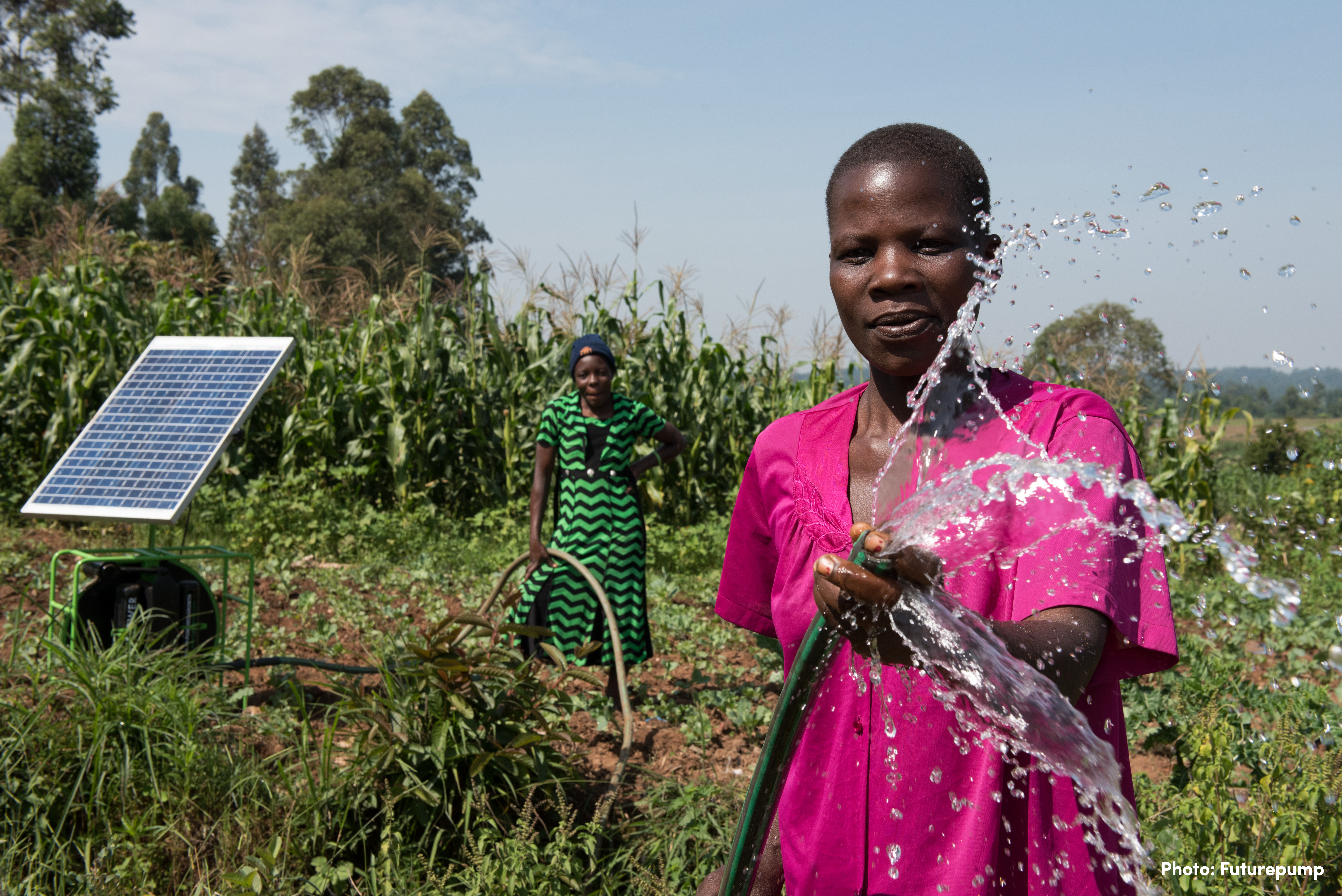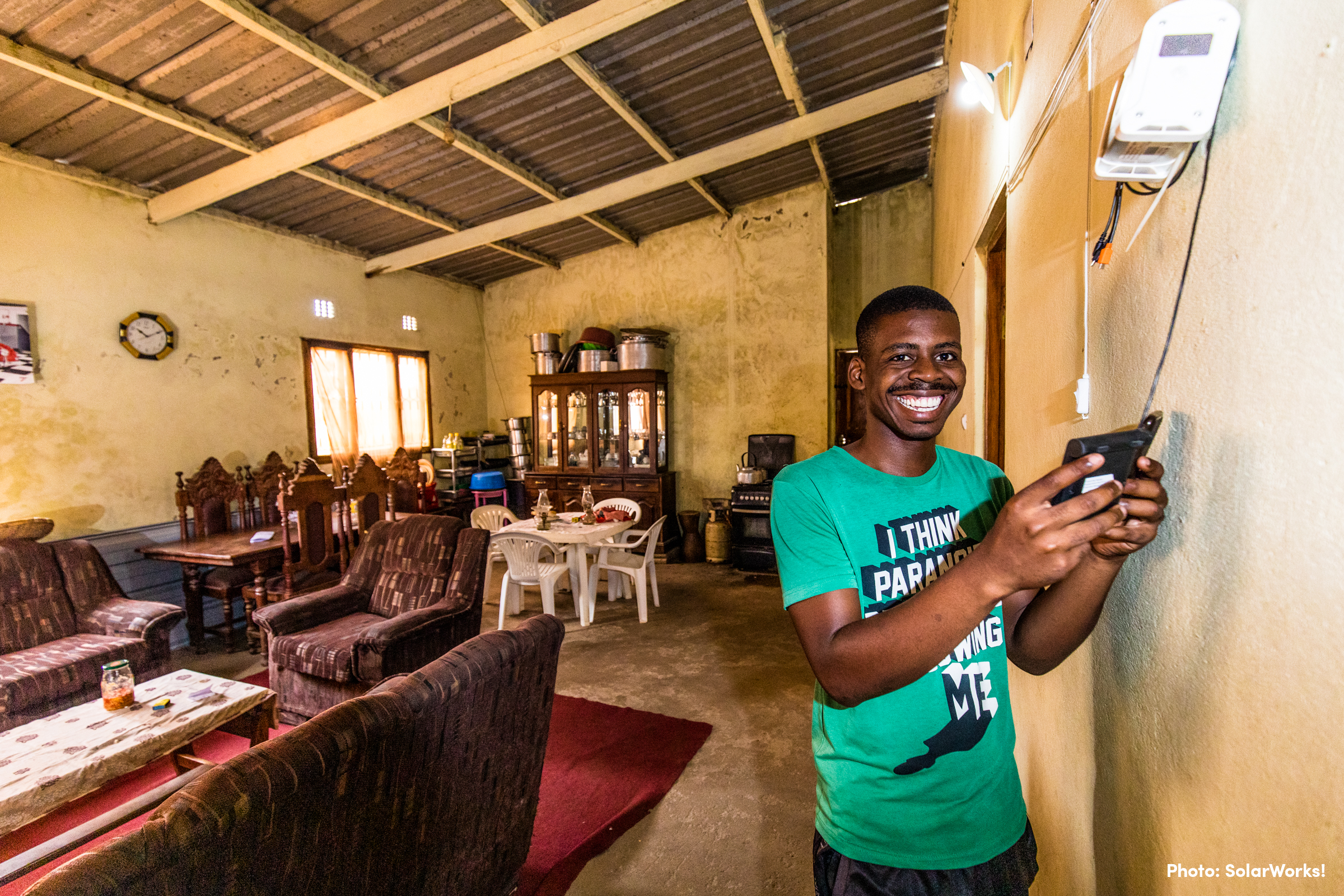Solar-powered devices designed to work off the grid are counteracting some of the effects of climate change in the world’s vulnerable communities. Now, a set of online tools that accompanied a new report on the state of off-grid solar technologies aims to more easily measure the impact of these devices.
Two nonprofit groups, the global development charity Practical Action, and Energy for Access, which works to promote high-performing appliances, published three resources to guide companies, non-profits, governments, and investors as they measure the impacts of off-grid solar solutions and integrate them into their plans for climate change resilience and adaptation. The resources accompanied the publication of “Off-Grid Solar: Powering Climate Resilience,” issued by GOGLA, the global association for the off-grid solar energy industry, in March.
“There is low recognition by the climate funds, governments, and other decision makers that off-grid solar technologies can contribute to climate resilience and adaptation, despite their many co-benefits,” said Thomas Stevenson, energy and climate officer at Practical Action and one of the authors of the framework. “Therefore, we want to encourage donors and investors to increase adaptation finance and channel more to the off-grid sector.”
Outside evaluators are still assessing the usefulness of the online assessment tool unveiled in association with the report. “There’s a lot to this,” said Mitra Ardron, executive director of the non-profit Natural Innovation. “In general, except for insufficient focus on the negative consequences such as groundwater depletion from solar pumps, the material is good.”
The potential for off-grid solar is enormous. There may be as many as 685 million people worldwide whose homes are not on a power grid, and off-grid solar technologies may be the fastest way to deliver electricity and services to them.

Off-grid solar can power all sorts of devices, not just lights and electronics. Photo: Futurepump, by IWMI and Jeffrey M. Walcott / GOGLA
“Off-Grid Solar: Powering Climate Resilience” describes the role of off-grid solar technologies in mitigating climate change right now. It mentions devices such as solar home systems, solar irrigation, solar-powered fans, and solar-powered cold storage as instrumental in building climate change resilience. Ten million micro-, small-, and medium-sized enterprises use off-grid solar technologies already, according to the report. These include things like solar-powered fans that cool spaces for 7.5 million people, and solar water pumps that boost crop yields by 50 percent on sub-Saharan African farms. In total, almost half a billion people have energy access through off-grid solar technologies, according to the report.
The economic impact can be significant. “In East Africa, an estimated 21 full time equivalent (FTE) informal roles are created for each 100 solar home systems sold, with 8 FTE and 4 FTE created per 100 systems in West Africa and South Asia respectively,” the report stated.
An accompanying document, the Off-Grid Solar Resilience and Adaptation Framework, is a measurement and evaluation tool for off-grid solar solutions. Following the link leads in a couple of steps to a spreadsheet, a beta version of the tool that will be finalized in 2026. Its creators are now seeking user feedback to make improvements.

The framework categorizes off-grid solar technologies into four impact areas. Photo: SolarWorks! / GOGLA
First is critical infrastructure and services such as healthcare, education, water supply, and communication. One example of this would be using off-grid technologies to maintain the cold chain for the delivery and storage of perishable vaccines and medicines, which is a critical need in many areas.
Another impact area is resilient livelihoods, where solar energy and devices can add value and diversify the products that farmers and small businesses sell. A third category is information and early warning systems; for instance, off-grid solar technologies can power the remote sensors and monitoring equipment needed to provide climate information and issue warnings of landslides, floods, and other climate-related disasters.
A fourth impact area is disaster response, which includes such applications as portable lights and standalone home solar electricity systems that could potentially save lives in the aftermath of a natural or manmade disaster.
Almost half a billion people have energy access through off-grid solar technologies, according to a report by GOGLA, the global association for the off-grid solar energy industry. Photo: Greenlight Planet
The guidance that accompanies the framework suggests a three-step process to improve climate resilience and adaptation initiatives. One: understand the context by assessing climate risks. Two: be intentional and develop a theory of change to measure and evaluate the role of off-grid solar technology in the initiative. Three: explore how these technologies can lead to systemic changes for long-term resilience.
Stevenson said the framework and guidance was still a work in progress and would be tested in real-world settings with member companies over the next year.
“We will then make any necessary improvements in early 2026 based on users’ experience,” Stevenson said. “This might include updating and refining the indicator repository and guidance on intervention design and data collection.”
Ardron, who founded and sold an off-grid solar product company before founding Natural Innovation, cautions that the impact sector as a whole—not just off-grid solar—tends to focus too deeply on measurement and evaluation.
“Resources could alternatively be spent on doing more of whatever they are doing,” Ardron said. “If you’ve got senior staff trying to implement a framework like this, then those staff are not spending their time trying to actually expand access.”
Measurement and evaluation is a concern, Ardron said. According to executives he has spoken to, companies in the development space often spend as much as 15 percent more time and resources than they believe they need to in order to satisfy donors.
“That isn’t a critique of this framework,” Ardron said. “I don’t find anything specific in this framework that looks problematic. It’s a critique of an over-complicated, over-expensive set of expectations that are taken from philanthropy and imposed on companies working in places that profit-focused companies have avoided.”
Even so, the report and resources may help companies and nonprofits focus their efforts more effectively. The entire package may be found at the GOGLA website on the page, Powering Climate Resilience, Adaptation & Justice.
This article was first published in the May 2025 edition of Mechanical Engineering Magazine. It is reprinted here with permission. See the original (available to members of the American Society of Mechanical Engineers): When Does Off-Grid Solar Make Sense?

